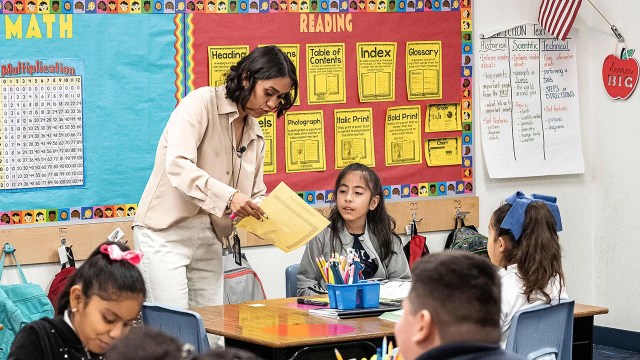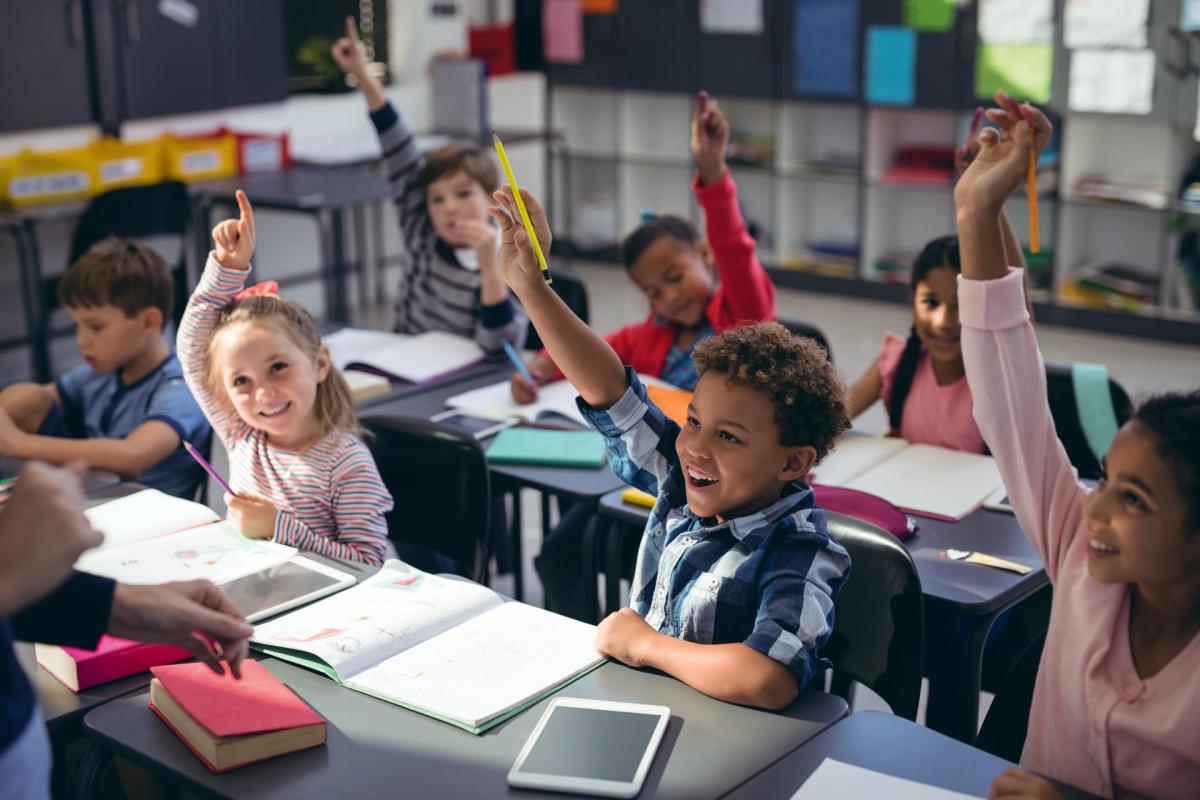Essential reasons to choose a Private School for early education
Wiki Article
Creative Discovering Activities in Preschool: Enhancing Abilities Through Play and Interaction
Imaginative learning activities in preschool work as fundamental experiences for young learners (Grade School). These tasks encourage skill development via playful involvement and social interaction. Children explore their creative thinking, improve communication, and find out useful social skills. Each experience adds to their development in one-of-a-kind methods. Understanding how these activities shape early advancement reveals the extensive impact of play in education. What certain components make these experiences so efficient in supporting all-round people?The Role of Play in Early Childhood Advancement
While several might undervalue the relevance of play, it offers as a fundamental part of very early childhood years growth. Via play, youngsters explore their environments, foster social skills, and develop cognitive capabilities. Involving in unstructured tasks enables them to use their creative imagination, try out analytical, and enhance their crucial reasoning skills. Play gives a secure space for emotional expression, allowing kids to browse their sensations and construct durability.Additionally, play urges physical advancement as youngsters participate in tasks that improve their electric motor skills and control. Communication with peers during play promotes teamwork and communication, preparing for future relationships. Grade School Peoria. Educators and moms and dads acknowledge that play is not simply a leisure activity however an essential facet of knowing, shaping a child's capability to adapt and flourish in various situations. Eventually, play enriches kids's lives, preparing them for the obstacles of the future while promoting a long-lasting love for knowing
Imaginative Arts and Crafts: Sparking Creative Imagination
Imaginative arts and crafts play a substantial function in stiring up youngsters's creativities and enhancing their imaginative abilities. These tasks encourage self-expression with numerous tools, such as paint, drawing, and sculpting. By engaging in hands-on tasks, kids discover to manipulate materials, fostering great electric motor abilities and hand-eye coordination.Innovative arts give a system for important and analytical thinking, as kids explore various methods and techniques to their creations. This exploration allows them to experiment, choose, and pick up from their experiences.
Collaboration is one more crucial aspect, as kids often interact on group projects, sharing resources and ideas. This interaction not only develops social abilities however additionally supports a sense of community. Inevitably, innovative arts and crafts function as vital tools in a kindergarten setup, promoting cognitive, psychological, and social advancement while stimulating the inherent interest and creative imagination of young students.
Interactive Narration: Structure Language Abilities
Interactive storytelling functions as a powerful tool for building language skills in little ones, as it involves them in the narrative procedure and motivates active participation. With storytelling sessions, youngsters are welcomed to listen, react, and even add to the unfolding tale. This interactive layout nurtures vocabulary advancement by subjecting them to new words in context.As they take part, children practice vital communication abilities, such as expression and expression. They learn to series occasions, determine personalities, and understand the story, cultivating critical thinking. In addition, interactive storytelling typically includes visual aids, audio effects, and props, which better enhance involvement and understanding.
In addition, when youngsters share their own stories, they experience a sense of company and creativity, reinforcing their language abilities in an encouraging atmosphere. Eventually, interactive narration cultivates a love for language and literature, setting a strong foundation for their future scholastic success.
Hands-On Science Experiments: Urging Inquiry
Hands-on science experiments provide young learners with important chances to discover and make inquiries about the world around them. Participating in simple, interactive experiments allows kindergarteners to ask inquiries, make predictions, and observe outcomes firsthand. These activities stimulate interest and promote a feeling of wonder, encouraging youngsters to blog here check out the residential properties of products, responses, and natural phenomena.For example, experiments such as planting seeds or blending baking soda and vinegar not just illustrate clinical concepts yet likewise improve vital thinking skills. Kids find out to document their monitorings, advertising literacy and numeracy as they gauge, compare, and record information. Furthermore, hands-on scientific research promotes a development way of thinking, teaching durability Continue as they navigate challenges and gain from mistakes.

Collaborative Gamings: Fostering Synergy and Social Skills
Taking part in joint games provides kindergarteners a special system to create teamwork and social abilities while building on the inquiry-based knowing cultivated by hands-on science experiments (Grade School Peoria). These video games encourage children to interact towards common goals, promoting communication and collaboration. As they navigate various difficulties, they discover to share duties, bargain functions, and fix problems-- essential elements of efficient teamworkVia structured tasks such as group challenges, relay races, or cooperative storytelling, youngsters not just enhance their social interactions however also strengthen their emotional intelligence. They gain understandings into compassion and assistance, learning that each youngster's contribution is valuable. Furthermore, these joint experiences foster a sense of community within the class, developing bonds that extend past private play. By incorporating more info here joint games into the educational program, teachers can prepare for vital life abilities that will benefit kids in their future educational and social atmospheres.
Frequently Asked Questions
Just How Can Parents Support Creative Learning in the house?
Parents can sustain creative knowing in the house by supplying diverse products, motivating exploration, taking part in creative play, asking open-ended inquiries, and promoting a safe environment where kids really feel totally free to reveal their concepts and imagination.
What Materials Are Finest for Arts and Crafts Activities?
A variety of products enhance arts and crafts activities, consisting of building paper, scissors, glue, markers, paints, and recycled products. These sources motivate imagination and permit youngsters to discover their imagination with hands-on experiences.Just How Do Educators Assess Kid's Creativity?
Educators evaluate kids's imagination via observations, portfolios of work, and open-ended projects that motivate self-expression. They review analytical skills, creativity, and willingness to experiment, supplying understandings into each youngster's special creative development and capabilities.What Are Some Instances of Outdoor Creative Activities?

How Can Social Themes Be Integrated Into Creative Discovering?
Cultural motifs can be integrated right into innovative learning by incorporating diverse tales, songs, art, and customs, encouraging kids to discover and commemorate different histories, cultivating inclusivity and understanding while improving their creativity and cognitive abilities.Children explore their creativity, improve interaction, and find out important social skills. Via play, children explore their environments, foster social skills, and establish cognitive capabilities. Additionally, play motivates physical development as children engage in activities that improve their motor abilities and coordination. Imaginative arts and crafts play a substantial function in stiring up youngsters's creative imaginations and enhancing their innovative skills. Interactive storytelling offers as a powerful device for building language abilities in young youngsters, as it engages them in the narrative process and encourages active participation.
Report this wiki page